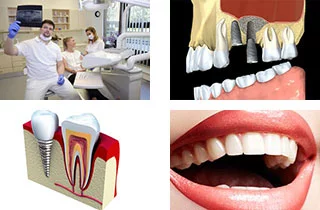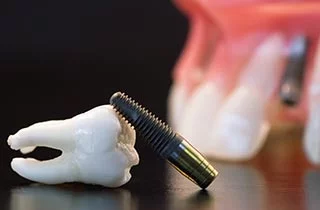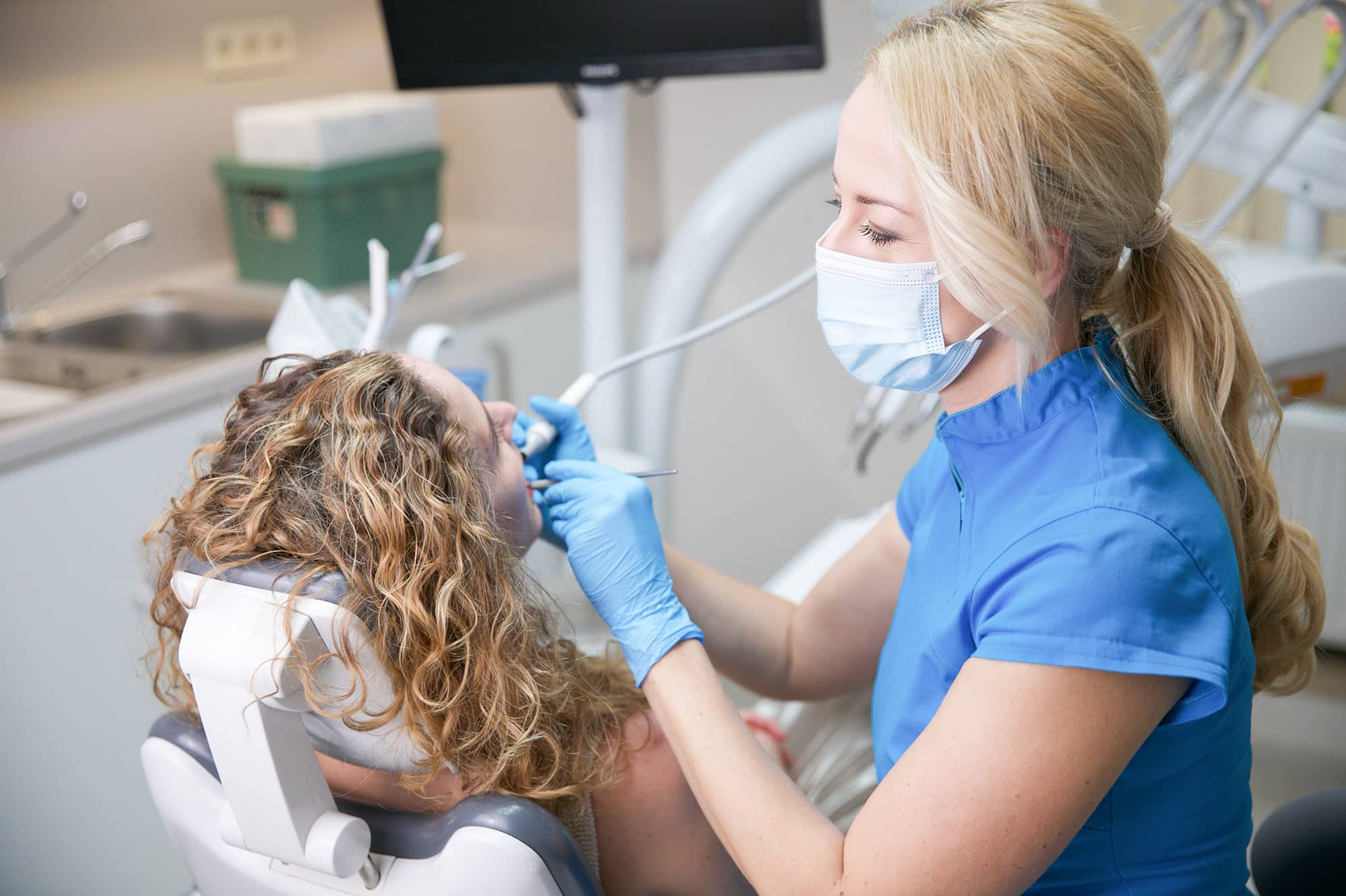With the spread of dental implants, the selection has also expanded in recent decades. If you want to be sure and have artificial teeth that function well and are reliable for a long time, you should choose classic quality from the confusingly large selection of dental implants. In Hungarian dental practices, high-quality implants from Switzerland, Germany, and Israel are typically used, both in the basic and premium categories. This article is aimed at patients considering dental implantation and wanting to make an informed decision between the different implant types, manufacturers, and implantation methods – especially those looking for a reliable, long-term solution and considering high-quality Swiss, German, or Israeli implants.
 From this article you will learn:
From this article you will learn:
- What are the 3 types of dental implants and what is the most commonly used?
- What type of dental implants are the best?
- One-phase or two-phase dental implant procedure?
Hungarian clinics that hold a leading position in dental tourism, i.e., in treating foreign patients, offer their patients only the best dental replacement products from Switzerland, Germany, and Israel. In our clinics, the popular standard implants from the Swiss manufacturer SGS are available. Premium implants come from the manufacturer Nobel Biocare. The so-called single-phase (implanted during only one procedure) implants are typically supplied by SGS and the Swiss-German company IHDE. Quality implants from Switzerland, Germany, and Israel are often the first choice, although the best option should be determined individually.
What are the 3 types of dental implants and what is the most commonly used?
There are three main types of dental implants:
Endosteal Implants: These are the most common type and are surgically placed directly into the jawbone. They resemble small screws or cylinders and provide a strong foundation for replacement teeth.
Subperiosteal Implants: These implants are placed on top of the jawbone, under the gum tissue. They consist of a metal framework with teeth attached to it. This option is often used when insufficient bone supports endosteal implants.
Zygomatic Implants: These implants are placed in the cheekbone and are a good option for patients with significant bone loss in the upper jaw. They provide a stable anchor for dental restorations. upper jaw bone graft
Which type of dental implant has the highest success rate?
Endosteal implants are generally considered to have the highest success rate among different types of dental implants. They are surgically placed directly into the jawbone, providing a stable foundation for artificial teeth. With proper care and maintenance, endosteal implants can last for many years, offering a long-lasting and natural-looking solution for missing teeth.
Can dental implants be done without screws?
Yes, dental implants can be done without screws. This type of implant is called a screwless or cemented implant. Instead of using a screw to attach the crown or bridge to the implant, a strong adhesive is used.
The advantages: Improved aesthetics: Screwless implants often have a more natural appearance, especially for front teeth, as there are no visible screw holes Shorter procedure time: The placement process can be quicker as there’s no need to screw the crown or bridge into place. Reduced risk of complications: The absence of screws can potentially lower the risk of complications like screw loosening or breakage.
The disadvantages: There is a problem with the implantation, which is a problem in some cases.
What type of dental implants are the best?
The popular SGS implants
Products from SGS are popular among both patients and doctors because they can be used in various ways, are durable, reliable, and affordable, and because SGS offers a wide selection of implants for different teeth and conditions. SGS provides solutions for interdental implantations, for replacing individual teeth, but also for dental root implantations in tight spaces. Their extra-short implants can be used very well for dental root replacement of upper teeth when the patient has little bone. Implantations with these implants can even be performed without sinus lift and jawbone augmentation, which significantly shortens treatment and healing processes, and last but not least, reduces costs. Among SGS products, you can find traditional, two-phase, and newer single-phase implants. The choice of the optimal dental implant depends on individual needs, bone condition, and the desired treatment method.
The premium brand solution
 The premium categories include, among others, the Nobel Active Implant developed by Nobel Biocare, which the manufacturer launched in 2008. Characteristic of this implant is its excellent primary stability, which it owes, among other things, to its special design. It anchors well in the bone structure, thus achieving excellent stability even in borderline cases, i.e., in soft bones or in the place of a freshly removed tooth root.
The premium categories include, among others, the Nobel Active Implant developed by Nobel Biocare, which the manufacturer launched in 2008. Characteristic of this implant is its excellent primary stability, which it owes, among other things, to its special design. It anchors well in the bone structure, thus achieving excellent stability even in borderline cases, i.e., in soft bones or in the place of a freshly removed tooth root.
Dental specialists who use this implant mention as advantages its particularly strong and durable material and the very strong bond between the implant and the abutment. Furthermore, some types of these premium implants also make implantation possible in tight spaces – for example, in the place of upper teeth. The manufacturer mentions as a special feature that Nobel Active implants maximally preserve both soft and hard tissues. This allows for the creation of dental prostheses similar to natural teeth. The Nobel company developed the cost-effective All-on-4 solution.
One-phase or two-phase dental implant procedure?
Nowadays, patients can usually choose from two types of implantation options.
Two-phase implant procedure
One option is the “traditional”, two-phase procedure. During this procedure, the gum is opened, and artificial tooth roots are drilled and fixed into the exposed bone. The gum over the implants is sutured closed – in this protected state, the artificial tooth roots heal and fuse with the bone, generally for 3-6 months. After the healing and osseointegration process, during a second procedure, the gum over the now stable tooth roots is reopened and the abutment is placed into the implant. Only after this are the dental prostheses – crowns, bridges, etc. – that are placed on the implants, finalized. Since two procedures are needed to complete the entire process, it is called the two-phase implantation procedure.
One-phase implant procedure
For single-phase implantation, completely different implants are used, which changes the entire procedure. This method is used primarily and almost always in cases of complete toothlessness. The implants used in this technology also include the abutment (which in the traditional procedure is only inserted into the tooth root later). They are also longer implants. Even the implantation looks different: the gum is usually not opened at all, unlike in the traditional procedure. The jawbone is accessed through the gum using a special drill. The implant is then screwed into the bone similarly to a wood screw. The pressure from the bone allows for rapid osseointegration and stability of the artificial tooth root. In this case, the abutment protrudes from the gum, an impression is taken from it, and then a fixed provisional bridge is also made.
Since the procedure is less extensive, single-phase implantation means less inconvenience for the patient. Of course, this procedure also has disadvantages. In a two-phase implantation, the implanted artificial tooth roots heal protected under the sutured gum. Single-phase implants must be protected during the healing process and should not be heavily loaded. Furthermore, this single-phase method cannot always be used. It is rarely used, for example, when only one tooth needs to be replaced. Both single-phase and two-phase implantations have specific advantages and disadvantages that should be evaluated individually. Read more about Implant Experiences, Dental Implant Costs

